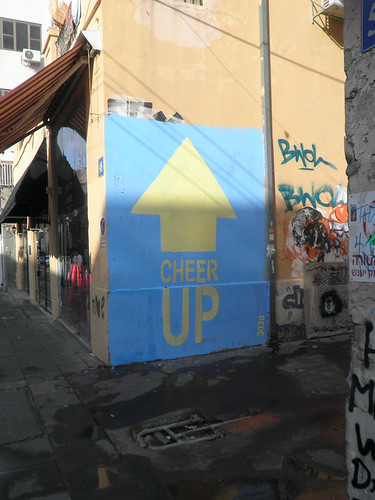The husband of one of the teachers at my school is an advertiser for Radio Nepal, the government-run radio station, and he very kindly offered to give me a tour. I was psyched, because Radio Nepal was Nepal's first radio station, started under King Tribhuvan after the downfall of the Rana Regime in 1951. It has four (I think) main stations and 17 auxiliary stations and broadcasts throughout the entirety of Nepal in FM, shortwave, and mediumwave in 20 languages. It has over twice the total listenership of the next most popular radio station.
We took a couple buses from his village to Singha Durbar in the heart Kathmandu. After three police checkpoints we entered into the government complex, a giant area that contains many of the ministries of the country. Radio Nepal is also housed there, in blocky, crumbling white Rana regime-built buildings with gargoyle-like wooden carved dragons peering down from the entrances (dragons aside the buildings look sort of Soviet, I remarked, but I think that was the wrong thing to say). In any case they had class.
I met some editors and news readers and the chief of the news staff. I observed a live reading of the 11:00 news, the taping of a women's issues program, and a live call-in talk show. With equipment donated by the United States and Japan, the aesthetic reminded me of the classic 1950s image of an American radio station, with the large-handed clocks and the "On-Air" sign and the giant microphone suspended from the ceiling (albeit smeared with
tikka).
I visited the music studio, said to be until recently the largest in South Asia. I chatted a little with a traditional folk singer/musician, and I couldn't help but ask permission to play the upright piano and vibraphone in their studio. A lot of the big name Nepali musicians over the years have worked almost exclusively for Radio Nepal.
But the most interesting thing to me was looking at the broadcast schedules for news bulletins in different languages. After the 1990 revolution when there was a return to parliamentary monarchy, Radio Nepal first began to broadcast in minority languages and focus on people's rights in a multiethnic society. I think the rise of community-based radio in Nepal began at the same time.
Today the main station in Kathmandu broadcasts in 10 languages and the other stations broadcast in 8 additional languages:
English
Nepali
Hindi
Urdu
Sanskrit
Tamang
Newari
Magar
Gurung
Bantawa
Bhojpuri
Tharu East
Tharu West
Sherpa
Maithili
Bantawa
Rai
Avadhi
I have heard criticisms of Radio Nepal; people complain that it is just a mouthpiece for the party that is currently in power. The message of Radio Nepal changes with each government upheaval. Some of the staff acknowledged these criticisms and admitted that under the current system, where Radio Nepal is under the auspices of the Ministry of Information, the ruling party of the moment has the power to 'use or misuse' Radio Nepal at their will. In the future Radio Nepal may be under direct parliamentary control, which will hopefully lessen the problem of bias.
But the emphasis on women's issues and on the rights of ethnic and linguistic minorities is an obvious presence in Radio Nepal programming, so it's an interesting institution.
Radio Nepal is freely available online at
http://www.radionepal.org. Check it out!













































